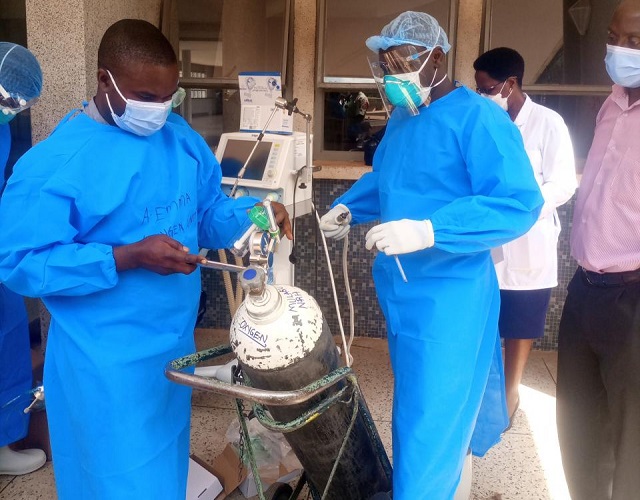
Jinja, Uganda | THE INDEPENDENT | Jinja Regional Referral Hospital has significantly increased its oxygen production capacity. The Hospital is now capable of supplying oxygen to health facilities across the Busoga sub-region and extending to areas like Teso, Elgon, Karamoja, and parts of Northern Uganda.
This boost in production was made possible through the construction of a new oxygen plant, funded by the Ministry of Health (MOH). The Uganda People’s Defense Forces (UPDF) engineering brigade commenced the construction in 2022, and the project is now 95% complete. The plant is currently undergoing a series of operational tests conducted by experts from both the MOH and Jinja Hospital to ensure its efficiency.
These tests, which have been consistent for the past month, indicate that the new plant can rapidly produce medical oxygen for both acute healthcare services and general ward needs, reducing the need to rely on private manufacturers for backup supplies.
The Hospital Director, Alfred Yayi highlighted the significance of this development, noting that it has eased the burden on patients and established Jinja Hospital as the main medical support hub for health facilities across the Busoga region. Yayi emphasized that oxygen is a critical supply in medical care, particularly for treating complicated pregnancies, non-communicable diseases, and emergencies like accidents.
Previously, the hospital’s oxygen demand averaged 25 cylinders per day, but their older plant could only produce up to 22 cylinders, making the hospital dependent on private suppliers. Now, with the ongoing tests, the new plant boasts a production capacity of 160-170 cylinders daily, which will be sufficient to supply all health facilities in the 11 districts of the Busoga sub-region and the entire Eastern Uganda.
Samuel Wako, the in charge of Jinja Hospital’s oxygen services, explained that the previous plant was slow and often faced operational difficulties. The new plant, however, produces 20 cylinders every 45 minutes, allowing the hospital to meet its daily production targets effectively.
In the past, it could take about two weeks to meet Busoga’s daily oxygen demand, resulting in long waits and staff working unpaid excess hours. Now, with the enhanced production capacity, staff members can enjoy day-offs and weekend leaves, a welcomed change from their previous workload.
Wako also pointed out that the new plant is automated, reducing the manual workload significantly. The plant’s automated fittings enable the seamless movement of oxygen cylinders throughout the production chain, minimizing the need for human effort.
***
URN
 The Independent Uganda: You get the Truth we Pay the Price
The Independent Uganda: You get the Truth we Pay the Price



